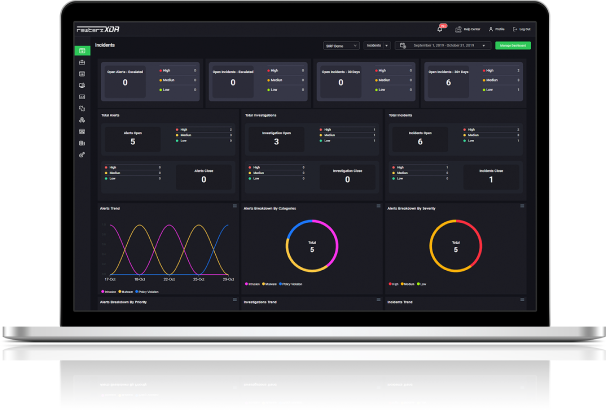

Remcos RAT – Active IOCs
February 1, 2025
Lumma Stealer Malware aka LummaC – Active IOCs
February 3, 2025
Remcos RAT – Active IOCs
February 1, 2025
Lumma Stealer Malware aka LummaC – Active IOCs
February 3, 2025Severity
High
Analysis Summary
Cybersecurity researchers have uncovered a malvertising campaign targeting Microsoft advertisers through fraudulent Google Ads designed to redirect users to phishing pages that steal their login credentials.

According to the Researchers, The attack specifically aims at users searching for "Microsoft Ads" on Google, displaying malicious sponsored ads that appear legitimate. Once victims click on these ads, they are taken to a phishing page that closely resembles the official Microsoft Ads login portal. The attackers also attempt to capture two-factor authentication (2FA) codes, allowing them to hijack accounts entirely. Researchers identified that this campaign has been active for years and may have also targeted other platforms like Meta.
To evade detection, the threat actors employ multiple techniques, including filtering traffic through Cloudflare challenges and redirecting VPN users to unrelated marketing websites. Additionally, users who attempt to visit the final phishing domain directly ("ads.mcrosoftt[.]com") are humorously redirected to a Rickroll video on YouTube, possibly to mislead security analysts. Most of the phishing infrastructure is hosted in Brazil, with domains ending in ".com.br," mirroring previous campaigns that targeted Google Ads users and were hosted on Portuguese domains. Despite Google's enforcement of security measures, such malicious ads continue to appear, exploiting gaps in ad verification processes.
Alongside the Microsoft Ads campaign, another large-scale phishing operation is targeting mobile users through SMS phishing (smishing) attacks impersonating the United States Postal Service (USPS). Victims receive messages claiming a failed package delivery, urging them to open an attached PDF file to update their address. According to the researcher, Within the PDF, a "Click Update" button redirects them to a phishing page where they are prompted to enter sensitive personal and financial information. Attackers exploit an advanced obfuscation technique to evade detection, embedding malicious links within PDFs without using standard tags, making it harder for security solutions to analyze the URLs.
The USPS smishing campaign has been linked to a well-known phishing-as-a-service (PhaaS) toolkit called Darcula, which has been widely used to impersonate postal services worldwide. Notably, attackers have devised methods to bypass Apple's iMessage security measures that prevent links from being clickable unless the sender is known. By instructing recipients to reply to a specific number, they manipulate iMessage into marking the message as trusted, making the phishing attempt more convincing. This tactic has been associated with a Chinese-speaking threat group known as the Smishing Triad, which has extensively targeted victims across different countries.
Both campaigns highlight how cybercriminals are refining their techniques to exploit security gaps in advertising platforms and mobile communications. The Microsoft Ads phishing operation uses sophisticated malvertising strategies, while the USPS-themed smishing attack leverages social engineering and technical obfuscation. Despite countermeasures from Google and Apple, these threats persist, emphasizing the need for heightened vigilance, stronger security controls, and continuous efforts to improve detection mechanisms.
Impact
- Sensitive Credential Theft
- Security Bypass
- Financial Loss
Indicators of Compromise
Domain Name
30yp.com
aboutadvertselive.com
aboutblngmicro.cloud
account.colndcx-app.com
accounts-ads.site
adslbing.com
adsmicrosoft.shop
adsverstoni.com
login-adsmicrosoft.helpexellent.com
portfoliokrakenus.com
portofolioprospots.com
www34.con-webs.com
ads.mcrosoftt.com
MD5
106e35ec5b4dea29097dc60c9ce03883
bad17a349c9c00e24681f0039e190804
08f67bb852c58e78e6fb3b463668eeed
e657f882a7cf6f6834de2e224c5c0208
SHA-256
e5527bff30c427e3f7a791b46f37ee34e2d84d68a08b10b515489fdbb69d6b33
febfba3b56611696e3904c6d7f8993d4542a57b9f8c2beeb5c190ce8f23266b2
e3dc7326ccf1433665c8ff4e4699f25f5d61fc77595458664204a99c396c1763
18094c18806bbc2e2aa9c76fa036b5ff0fdde432b357d23e8cb14a800aead518
SHA1
27e8778691de9ca0287b7f43f8ede0c88ad67865
48849ab48e73a407ecf872c9ac42cb817fe5e500
171303f62e5f036fbcc559cfba6aecc9399a4b46
6bcb90a78de663604bf1f64f3b7d468257fb3a22
Remediation
- Block all threat indicators at your respective controls.
- Search for Indicators of compromise (IOCs) in your environment utilizing your respective security controls.
- Perform comprehensive security audits on the email server infrastructure to identify and address any potential weaknesses. This includes reviewing server configurations, access controls, and encryption protocols to ensure they meet industry best practices.
- Emails from unknown senders should always be treated with caution. Never trust or open links and attachments received from unknown sources/senders.
- Enable 2FA for user accounts on the email server to add an extra layer of security. This prevents unauthorized access even if usernames and passwords are compromised.
- Maintain cyber hygiene by updating your anti-virus software and implementing a patch management lifecycle.
- Implement network segmentation to isolate critical systems and sensitive data from the rest of the network. This limits the lateral movement of attackers in case of a breach and reduces the impact of potential future attacks.
- Implement a regular backup strategy for email servers and critical data. Ensure that backups are stored securely and regularly tested for data restoration.
- Apply the latest security patches and updates to the email server software and associated components to address any vulnerabilities a threat actor may have exploited. Also, prioritize patching known exploited vulnerabilities and zero-days.








